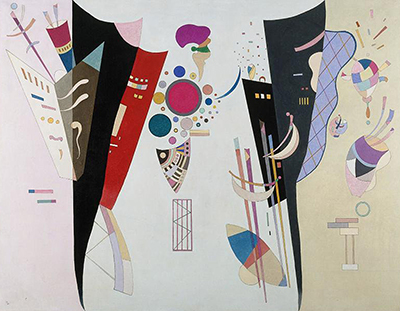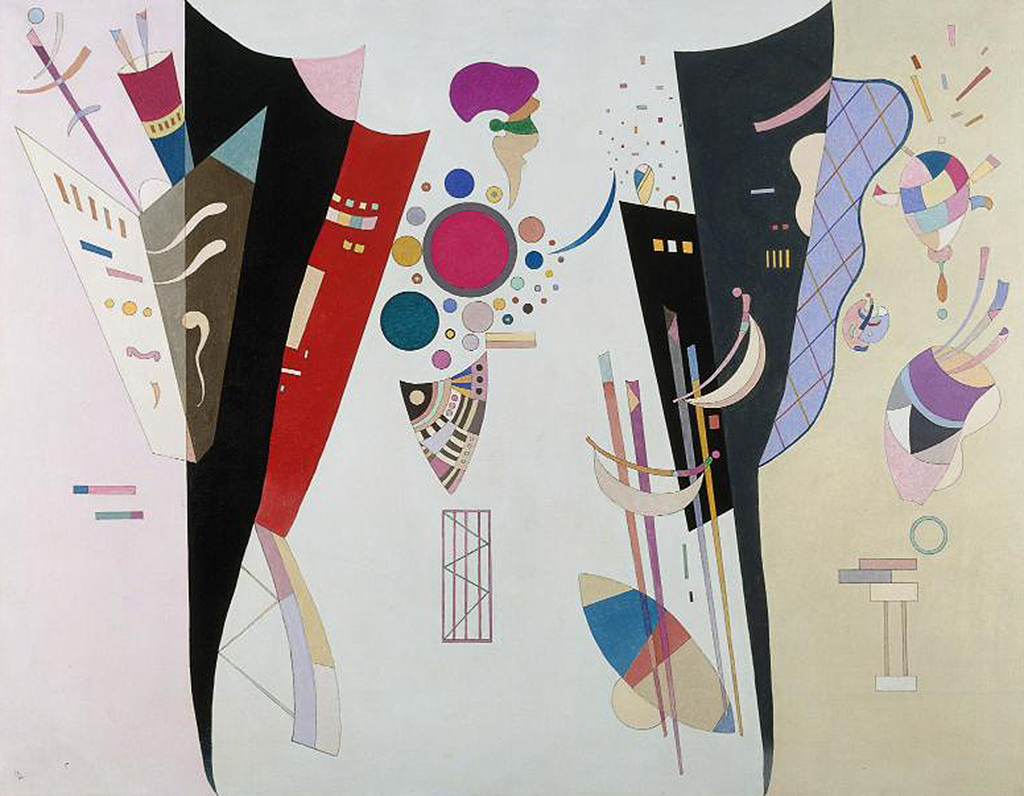Reciprocal Accords dates from 1942, just two years before the artist's passing. By this point he had reached his pinnacle, settling upon a style with which he was finally contented.
By this stage in his career, Kandinsky was working in a very precise way in terms of clear shapes and lines. His tones of colour are also used one at a time, and not allowed to mix with their neighbours. This again leaves a clarity related to contemporary art, perhaps even a mathematical graph or diagram. Few would previously have considered this art, as such, but the 20th century allowed new ideas and techniques to be embraced for the first time. You will find a breadth of ideas across Europe during this time, as well as a number more within the US. Many others would go on the same journey as Kandinsky, working initially in more traditional, accepted styles before then slowly pushing further and further towards a perfect ideal of abstraction. Refer to the likes of Joan Miro's Triptych Bleu I, II, III and Piet Mondrian's Broadway Boogie Woogie for examples of this.
The composition features two main areas, one to the left, one to the right. Two assemblies of different shapes lie opposingly on different sides of the canvas, with a few additional areas of interest in between them. Most space is covered with long, single tone shapes, whose outline is sharp. Some then hold additional flourishes of detail within them. The arrangement of circles in between is almost cosmological in style, something common within many of the abstract artists of the first half of the 20th century. The artist uses large spheres of black and grey in order to fill much of the work, with these contrasts matching well against the bright colours that he used elsewhere, such as red, purple, pink and blue.
The painting can be found in the collection of the Georges Pompidou Center, Paris, France. Their collection is outstanding, concentrating on 20th century art with a focus on the big names as well as the most contemporary of styles. Leger, Matisse, Kahlo and Delaunay can be found here, as part of a much wider and more diverse selection that would particularly appeal to younger generations who tend to prefer these modern styles of art. There is also a good amount of sculpture to be found here, representing the renaissance of this art form with the past century or so. Despite the high level of competition for visitors within this city, the institution still receives many thousands of people each and every year.





